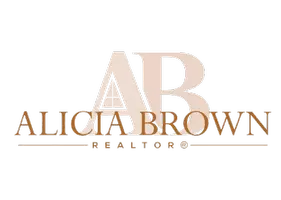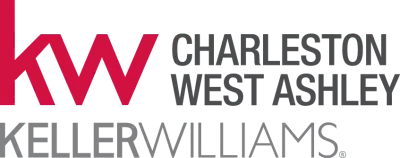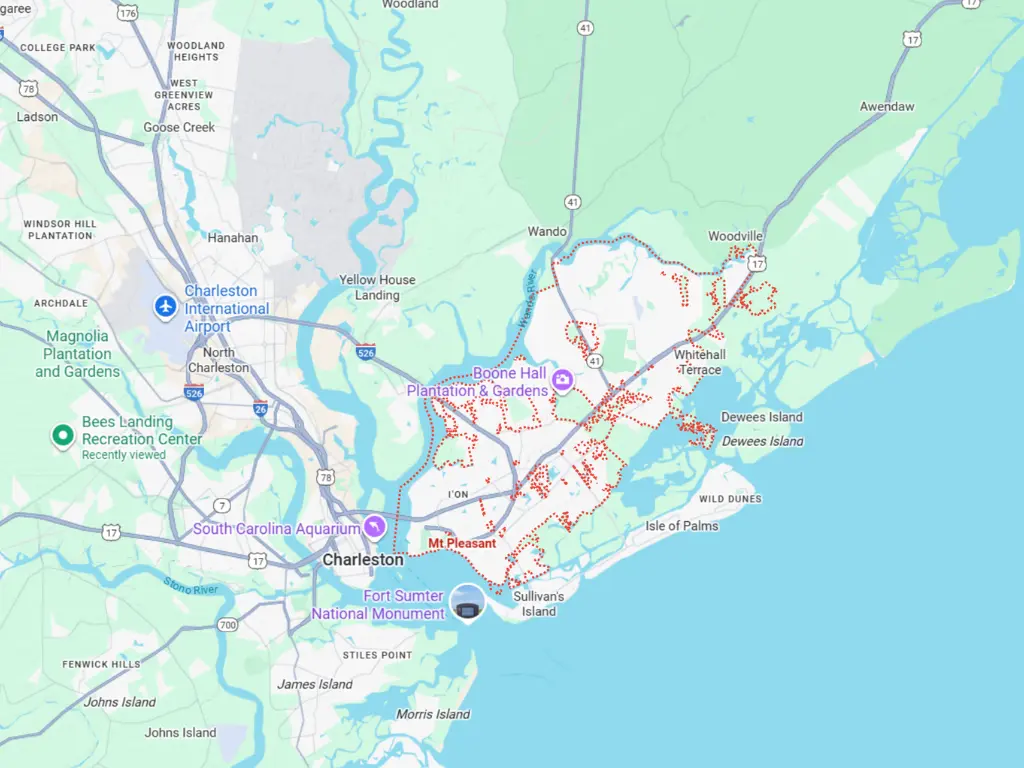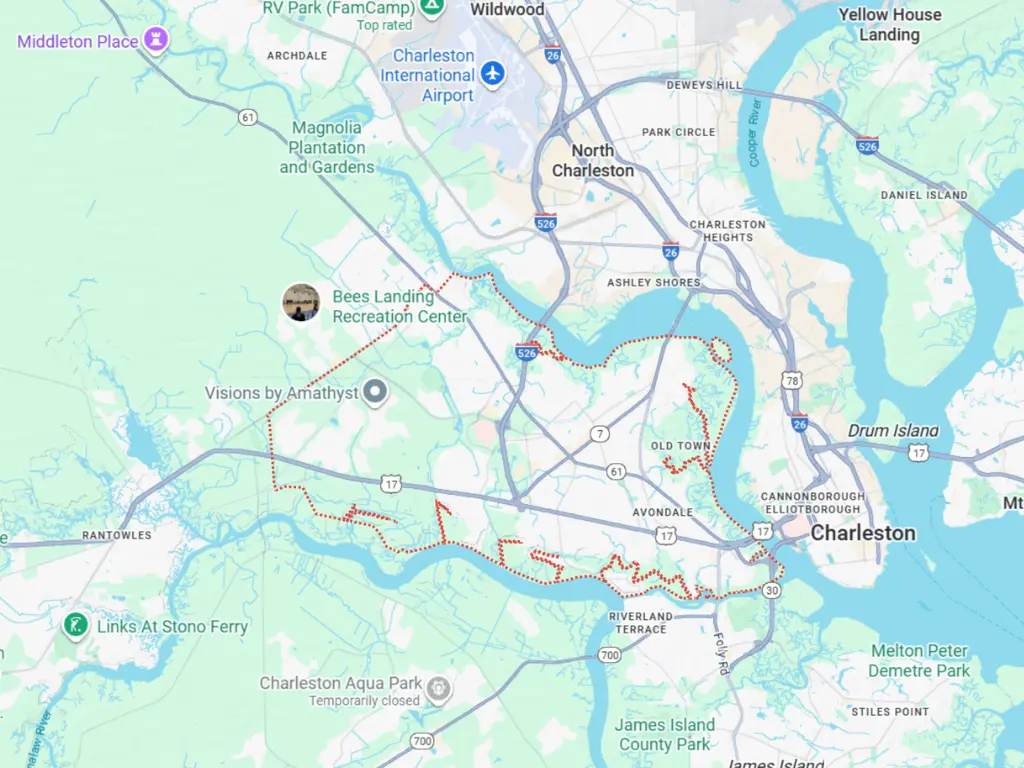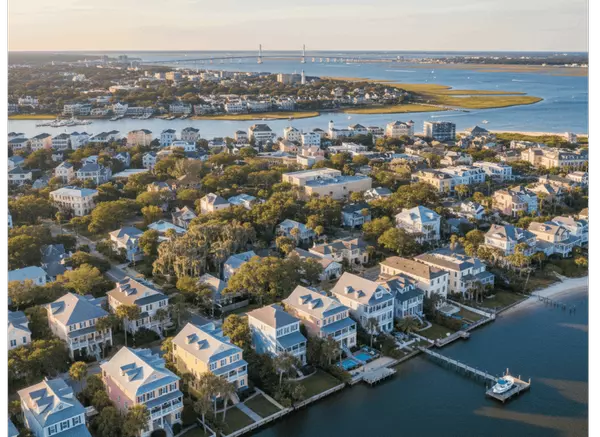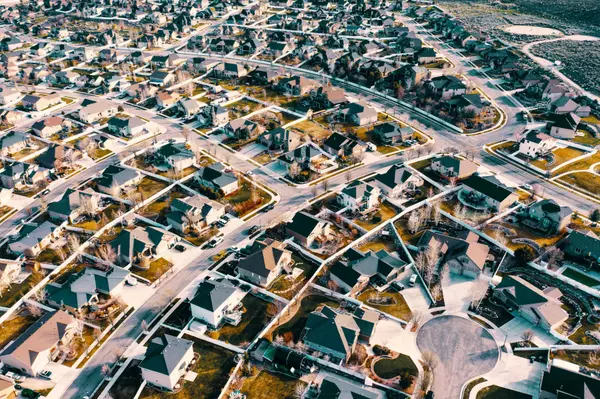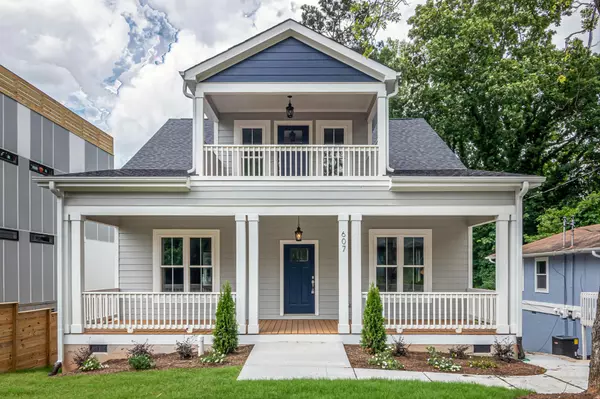Top 5 Neighborhoods to Actually Live in Charleston (2025)
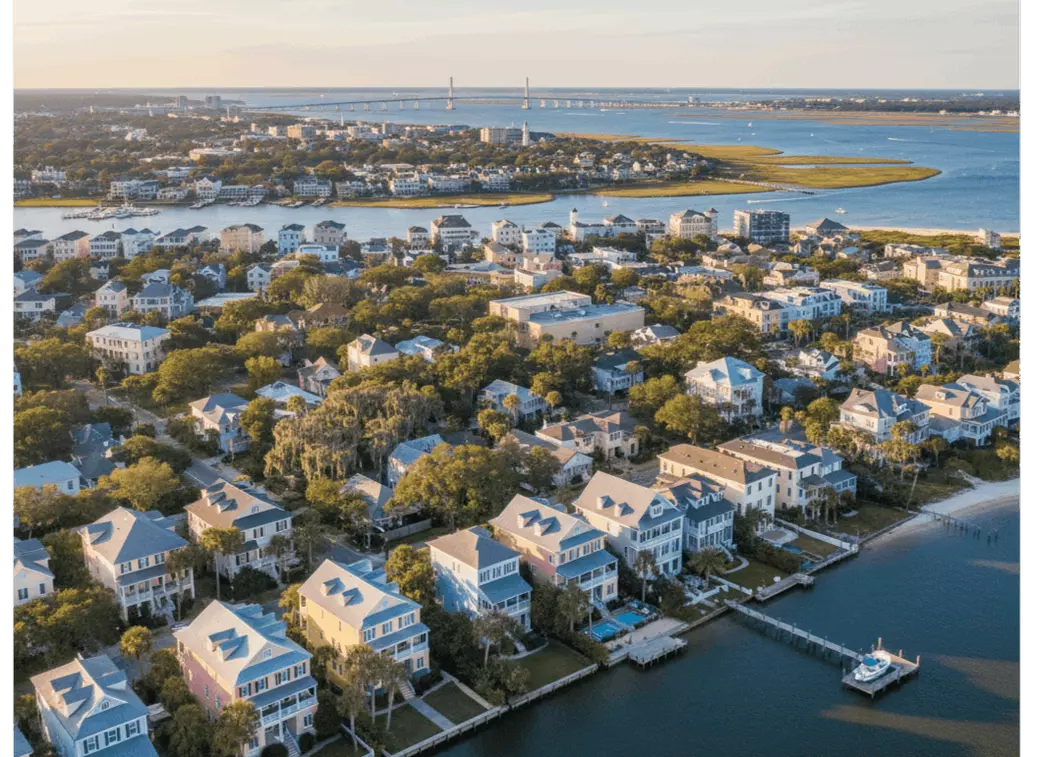
Charleston isn’t just a pretty postcard, it’s a living and a breathing place where thousands of people call home. That means when you buy a house here, you’re buying not just walls and land, but a daily experience: your commute, your schools, your weekend walks, your access to nature, your local food, your community.
In this blog post, I’ll walk you through five neighborhoods (and areas) that are especially good for “regular people”, and I mean people who care about livability, comfort, value (relative to what you get), and long-term sustainability. I’ll also show you what homes typically cost in each, backed by recent data, and flag things you’ll want to watch out for.
Charleston's Market Context in 2025
Before we jump into neighborhoods, let’s set the stage:
- The median listing price for homes in Charleston (citywide) in 2025 is approximately $625,000, with an average of $366 per square foot, according to Realtor.com.
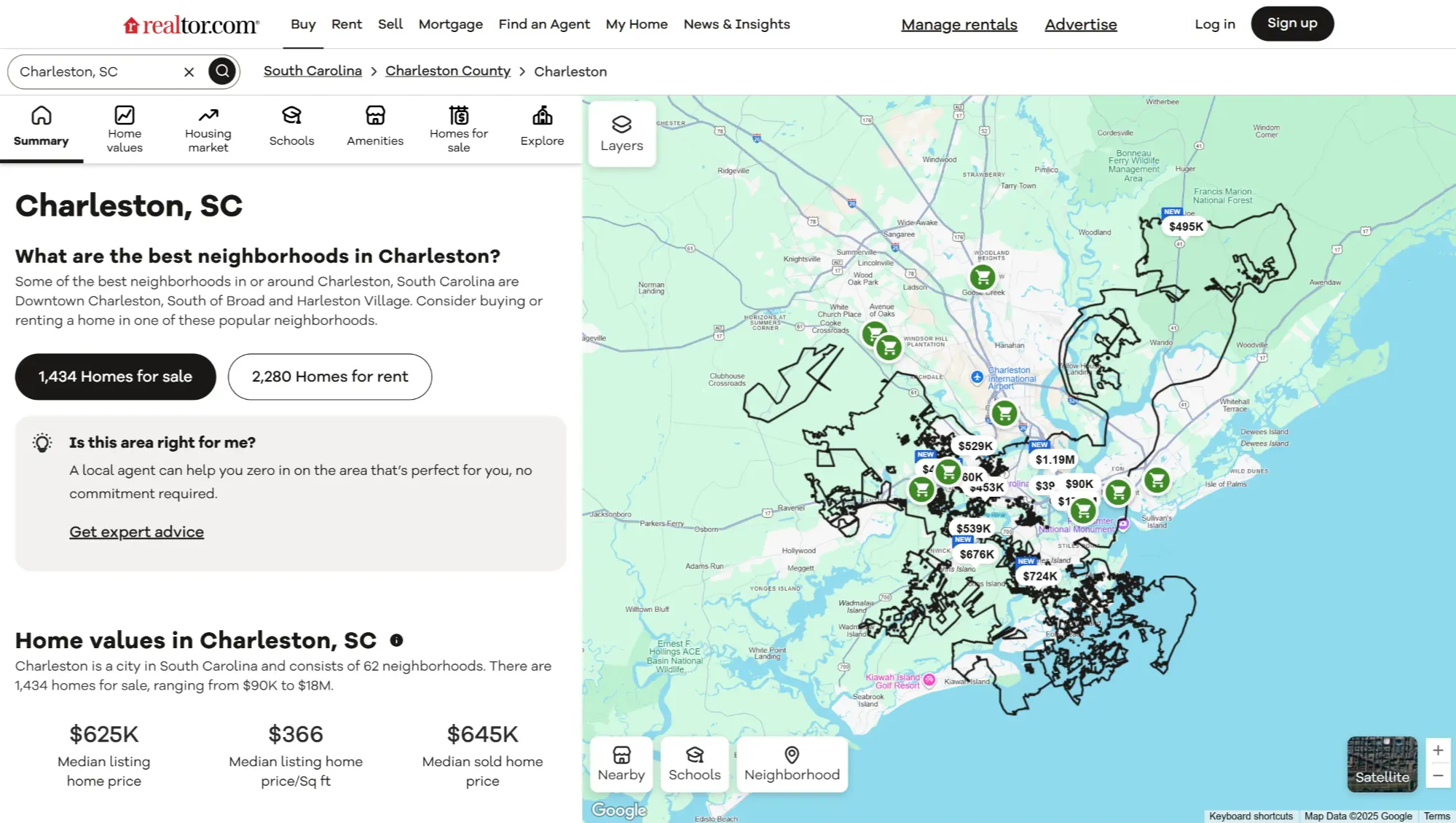
- In Charleston County, Zillow reports an average home value of ~$603,877 (slightly down ~0.2% year over year)
- The market is showing signs of cooling: In 2025, active listings rose ~36% year-over-year, and growth in home values has slowed to ~1% annually, according to the article by reventure app.
So, you still need a solid budget (this is not a bargain market), but buyers have a bit more breathing room than in the overheated years past.
What Makes a Neighborhood Great to Live In (Beyond Prices)
Here are some of the non-financial things you should measure:
- Walkability & daily convenience (groceries, coffee, parks)
- Nature, green space & water access
- Schools & safety
- Sense of community / neighborliness
- Commute / access to jobs / traffic
- Infrastructure & resilience (especially flood risk in Charleston)
- Diversity of housing options (you might want starter homes, upgrades later)
With those in mind, let’s go through five of the best neighborhood choices.
1. Mount Pleasant / I’On
What it’s like to live there:
Mount Pleasant is often the first name people mention when asked “best area near Charleston.” It balances suburban calm with proximity to the city. Plus, it has the kind of amenities and walkable pockets that feel boutique and curated.
Within Mount Pleasant, I’On is a standout. It’s a planned community with marsh views, walkable sidewalks, community parks, and a strong sense of identity. People talk about walking to local cafes, neighbors greeting each other, and having both nature and convenience.
You also get access to Shem Creek, with boardwalks, seafood spots, and weekend strolls, which adds a pleasant local flavor.
Mount Pleasant also has a strong reputation for good public (and private) schools, solid local retail, and a more structured suburban texture.
What you’ll typically pay (2025 estimates):
- In Charleston County, Mount Pleasant’s home value is one of the highest: Zillow lists ~$858,188 as the median in that area.
- Because of that, many homes in I’On, waterfront lots, or newer construction reach well into the $1 million+ range.
- More modest homes (nonwaterfront, older, or smaller lots) might still command $700,000 to $1,000,000+, depending on condition and location.
Things to watch out for:
- Because the demand is high, lot prices and build costs are steep.
- Risk of flooding or marsh-proximity issues (drainage, insurance) in lower areas.
- HOA or covenants in planned pockets might be restrictive or costly.
2. Daniel Island
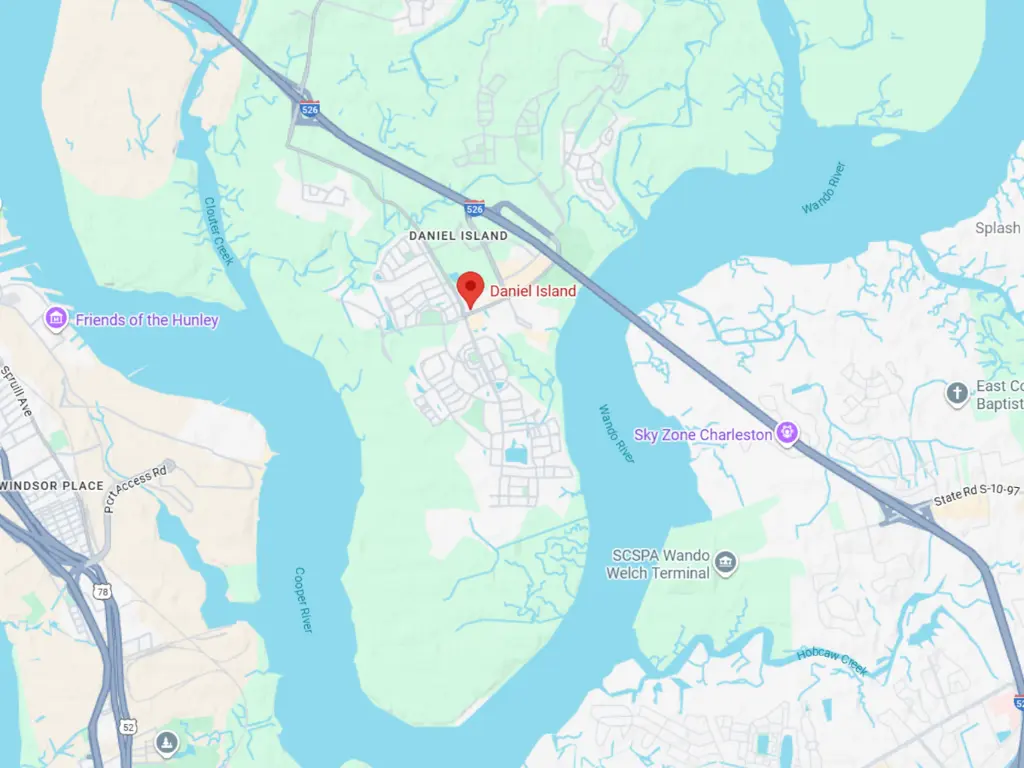
What it’s like to live there
Daniel Island feels like a refined, quieter island suburb. It’s well-planned, with parks, greenways, sidewalks, and a cohesive feel. People appreciate the clean, safe streets, and the balance of being removed just enough but still within reachable distance of Charleston.
Also, because it’s planned, you don’t see as many “surprise” infrastructure quirks — roads, drainage, layouts tend to be more modern and thought out.
It’s a good middle ground: more structured than rural areas, more relaxed than dense downtown.
What you’ll typically pay
- The more premium homes, especially waterfront or newer builds, frequently exceed $1.5 million+.
- Interior townhomes or less dramatic lots may fall in the $600,000–$900,000 range, but that’s the more modest end.
Things to watch out for
- Fewer bargains than more remote areas.
- Because it’s planned, architectural variety may be lower in certain enclaves.
- HOA rules and fees can be higher given the amenities and maintenance.
3. Johns Island
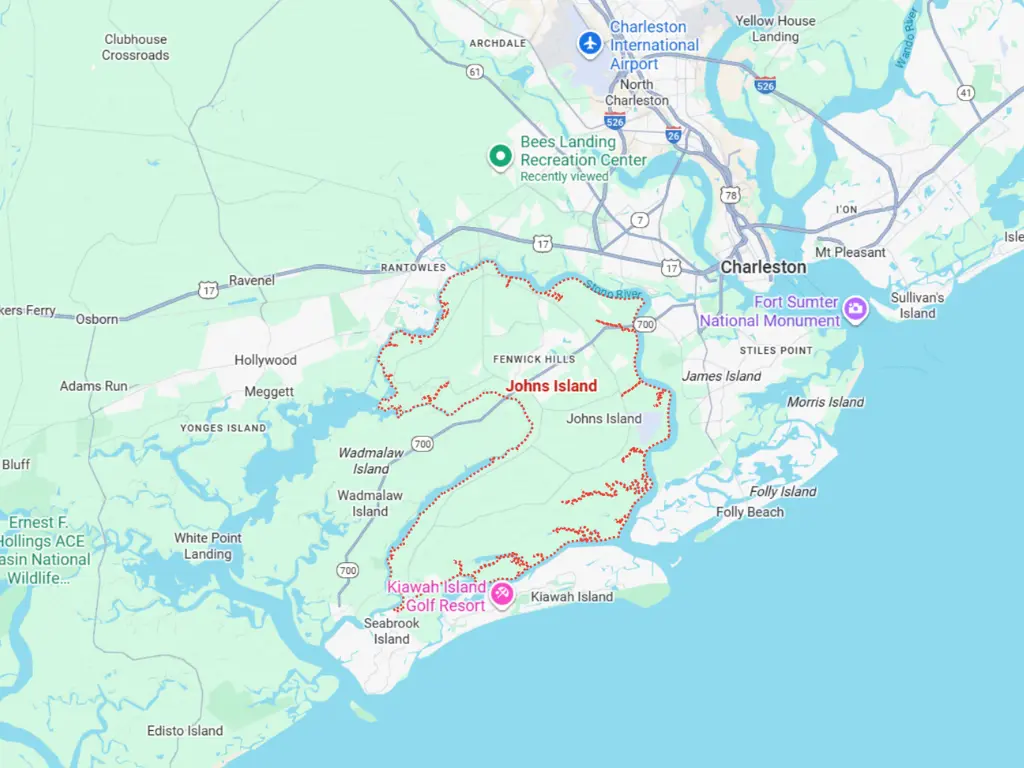
What it’s like to live there
If you want more land, trees, open space, and a more relaxed feel — Johns Island is a compelling option. It’s become increasingly popular for people who want a taste of rural or semi-rural Lowcountry but still have access to Charleston.
You’ll see larger lots, sometimes more custom builds, creeks, marsh views, and nature around you.
Schools in many parts are good, and crime rates are relatively low. The slower pace is part of the appeal.
It’s not perfect, you might spend more time driving for errands, and infrastructure (roads, utilities, drainage) can matter a lot.
What you’ll typically pay
- Many desirable homes list in the $800,000 to $1+ million range (especially for water/creek proximity).
- More modest or interior lots might be in the $400,000 to $600,000 ballpark (depending on condition, distance, lot size).
Because Johns Island is more varied, the spread is wide.
Things to watch out for
- Road quality, drainage, flood risk in low-lying parcels.
- Some parts are further from grocery, commercial zones, more driving required.
- Infrastructure (internet, utilities) might lag in very rural parcels.
4. West Ashley
What it’s like to live there
West Ashley often gets overlooked, but that's a mistake. For people who want closer access to Charleston but with more value, this area has a lot to offer.
It’s a large area that spans from more historic, established neighborhoods near the river to newer developments farther out.
You’ll find a mixture: older cottages, mid-century homes, renovations, newer subdivisions. Because of the variety, there’s more opportunity for finding something that fits your style and budget.
Also, West Ashley has green resources: Bees Landing Recreation Center, a 25-acre park, is an example of local investment in amenities.
What you’ll typically pay
- West Ashley tends to have more moderate pricing compared to Mount Pleasant or Peninsula.
- Depending on location (closer in vs farther out), you might find homes ranging from $400,000 to $800,000+ for decent single-family homes (with nicer ones going higher).
Because there’s diversity, you may find hidden gems or homes that need renovation.
Things to watch out for
- Some areas are older and may require more maintenance.
- Infrastructure, traffic congestion, or road quality can vary widely depending on which sub-neighborhood.
- Some West Ashley parcels may still face flood or drainage challenges depending on their elevation and proximity to water.
5. Charleston Peninsula / Historic Core (Downtown)
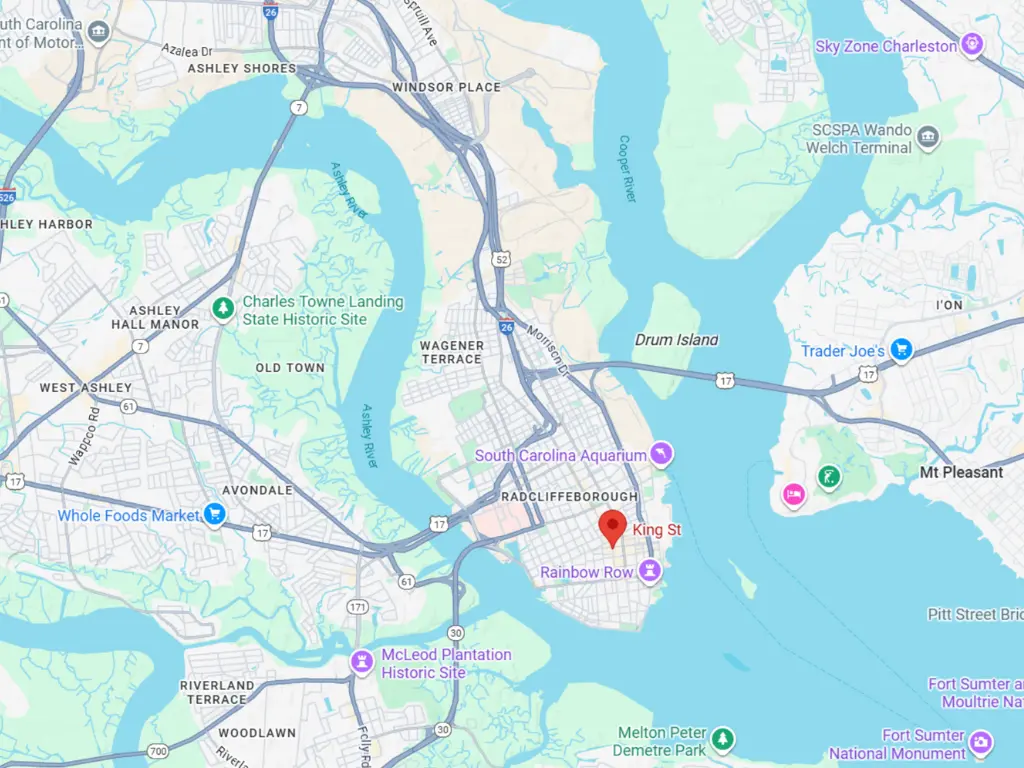
What it’s like to live there
If your dream is to step out your front door and hit museums, cafés, galleries, historic streets, and waterfront walks, living downtown has unbeatable charm.
You get the “walk-everywhere” lifestyle, historic architecture, a strong sense of place, and proximity to everything that defines Charleston. It’s living in the heart of the city’s soul.
Many people who choose this area accept tradeoffs: smaller yards, parking constraints, maintenance challenges of older homes, and the fact that some streets flood. Flooding risk is especially real on the peninsula: as one recent The Wall Street Journal piece noted, 73 % of major ocean floods in Charleston since 1923 have happened since 2015, and rising tides and weather are pushing the urgency of mitigation.
What you’ll typically pay
- Downtown / Peninsula listings are premium. The median listing price is ~$1.7 million, and median sold home price ~$1.4 million (as of recent data from Realtor).
- Even “smaller” or less grand homes often start in the high six to seven-figure ranges, depending on condition, block, and historical significance.
Things to watch out for
- Historic district rules may restrict what you can renovate or expand.
- Flood risk is serious; many homes require elevation, mitigation, and potentially high insurance costs.
- Maintenance costs are likely higher (older structures, bespoke features)
- Parking and lot size are limited in many cases.
So Which Charleston Neighborhood Fits You Best?
To help you decide, here’s a summarized list:
- Mount Pleasant / I’On – Great for families seeking top schools, convenient amenities, and a well-balanced community lifestyle.
- Daniel Island – A master-planned community offering walkable living, low-maintenance homes, and easy access to shops and recreation.
- Johns Island – Perfect for those who want more land, privacy, and a slower, nature-focused pace away from the city.
- West Ashley – A versatile option near downtown, offering good value, larger lots, and a mix of older and newer homes.
- Downtown Charleston (The Peninsula) – Ideal for buyers who want walkability, history, and vibrant city life surrounded by classic architecture.
Also, consider your budget buffer, allow wiggle room for renovation, flood mitigation, insurance, or infrastructure fixes.
Final Thoughts & Tips
- Flood & Elevation Matter: Especially in coastal Charleston, choosing a lot with better elevation or good drainage can save you headaches (and dollars).
- Inspect Beyond the House: Look at roads, drainage, utilities, tree coverage, and surrounding houses.
- Future Growth & Planning: Pay attention to upcoming development, changes in zoning, and infrastructure projects (they can lift or hurt value).
- Balance Your “Must-Haves”: Sometimes, you may need to trade a short commute for more land, or pay a premium for walkability.
- Work with Local Experts: Local realtors, engineers, flood specialists, and neighbors often know things you can’t find in listings.
Want to know more about Charleston’s neighborhoods? Let’s talk about which area best fits your lifestyle, goals, and budget.
